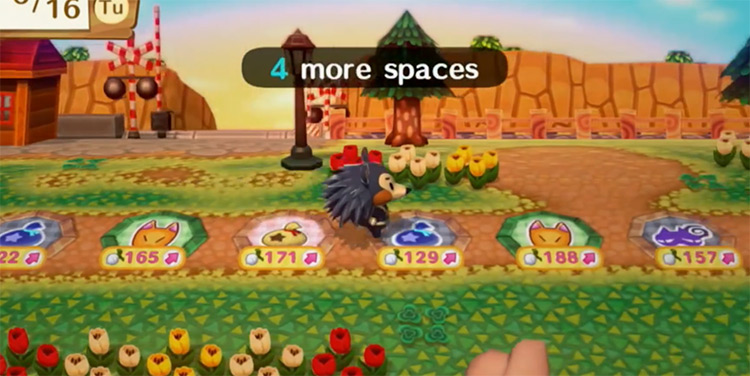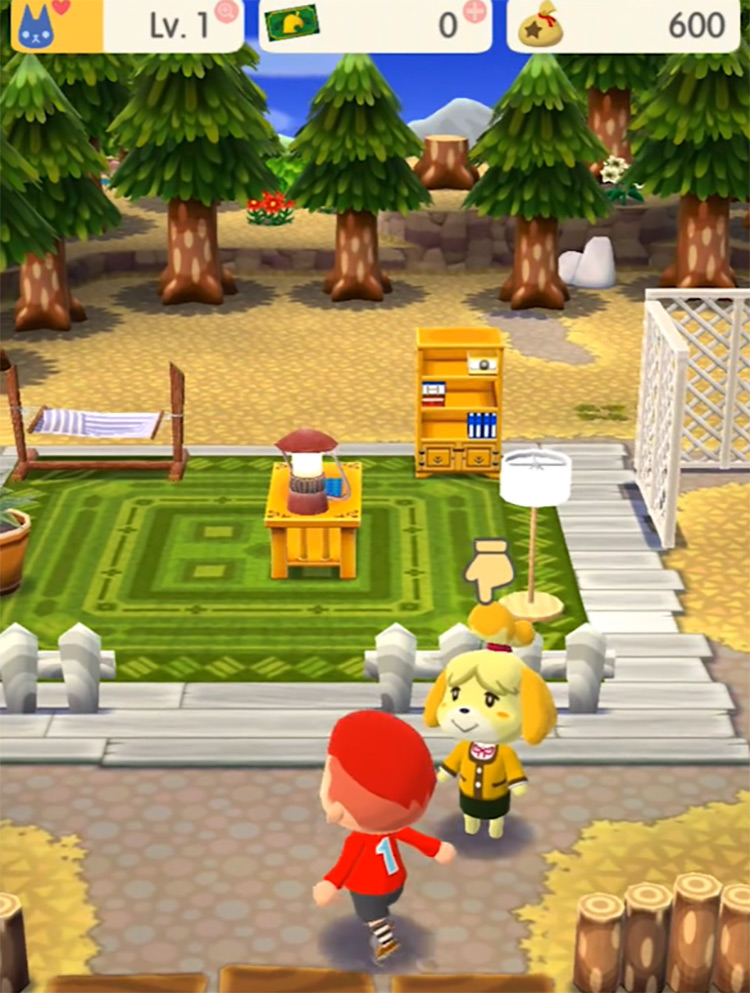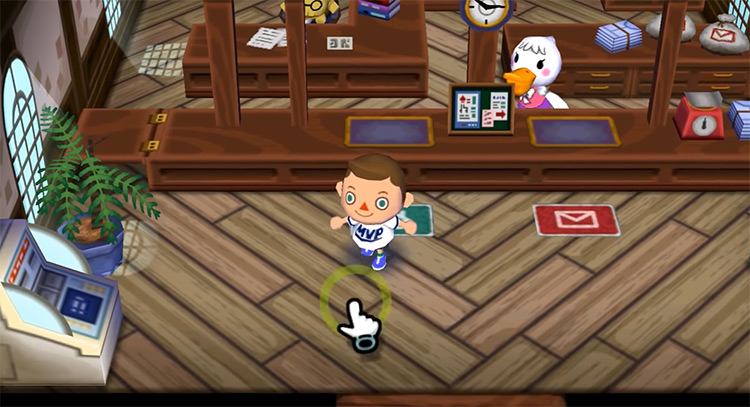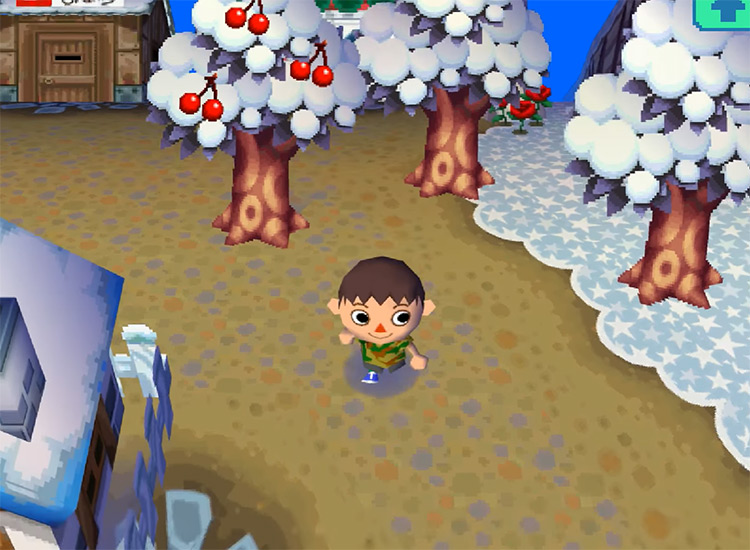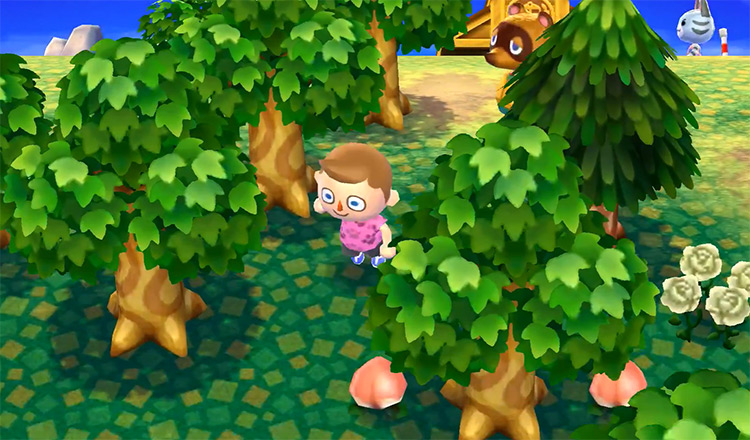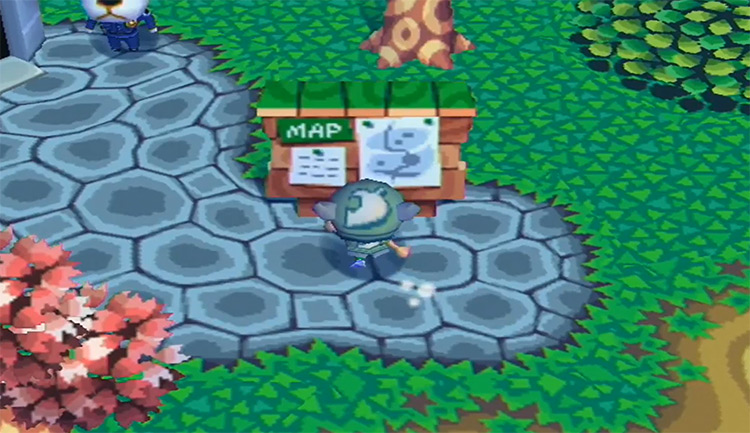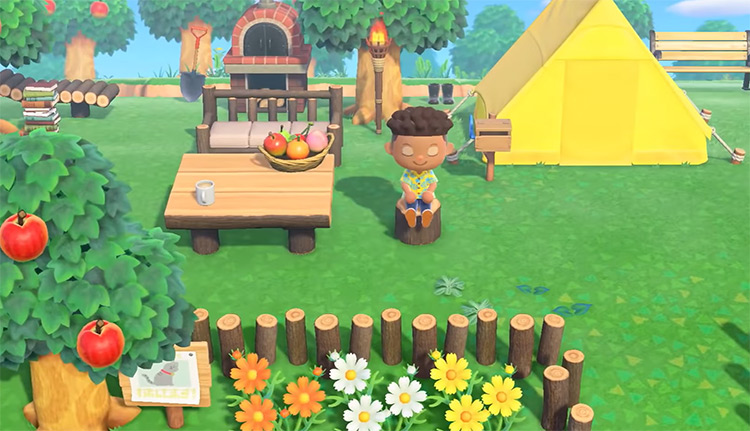Graduations are held in its cutesy world. Celebrities post pictures of their villagers doing digital PR. And there’s an entire black market economy revolving around the charming anthropomorphic cat Raymond. New Horizons is certainly a beautiful AC game, one that challenges you to let go of your achievement-based way of life and allow yourself to relax. In today’s fast-paced world where everyone’s trying to climb to the top, it’s a rebellious concept. And we love it. To reminisce a bit about the history of this series, join me as I rank and review every title in the Animal Crossing franchise so far.
8. Animal Crossing: Amiibo Festival (2015)
AC: Amiibo Festival looks pretty enough. But other than that, it fails in almost every respect (I’m so sorry to the hardcore fans reading this!) The boards are bland, the characters feel soulless compared to other titles, and the mini-games are just… boring. I thought a game that lets me play as Tom Nook, K.K., and Isabelle had no way of failing. And I was proven wrong. An interview with director Aya Kyogoku sheds some light as to why this game even happened. The development team wanted to pressure Nintendo into making Animal Crossing amiibo. So they whipped something up that included their favorite characters and had amiibo functionality, with little to no regard as to whether it was fun. If you love AC then sure, give it a whirl. But if you’re tight on gaming time these days, I say keep reading.
7. Animal Crossing: Pocket Camp (2017)
It took a game as terrible as AC: Amiibo Festival for me not to place the franchise’s first foray into mobile gaming at the very bottom of the list. It’s not that I dislike games on my phone. In fact, the fewer gadgets I have to carry around, the better! But there are only so many ways you can monetize a free-to-play title on mobile. And seeing one of my favorite franchises tainted by the demon of microtransactions is just sad. If you can look past that(which I can’t) the game isn’t half-bad at all. The quick-play nature of the mobile platform works surprisingly well with Animal Crossing’s laid-back social simulation. And the graphics on this game are lovely for a phone game. Placing the action in a small-scale campsite was a master play on the part of Nintendo, and it gives AC: Pocket Camp its own personality rather than trying to recreate the experience of a mainline AC title. Simultaneously, series staples like attending events, decorating, character customization, and building relationships with the many villagers (and even other players) remain just as fulfilling. So hey, another one to try if you’re really into AC.
6. Animal Crossing: Happy Home Designer (2015)
Speaking of games brought down by monetization and pricing, let’s talk about AC: Happy Home Designer on the 3DS. After the resounding success of AC: New Leaf, Nintendo released this spin-off where you take control of a home designer working for Nook’s Homes, rather than a villager. The concept behind it is pretty entertaining: to design homes for the franchise’s many charming animals according to their tastes, requirements, and budget. It was born from the developers’ own house-designing process, and it works wonders as a fun pastime. The thing is, this “fun pastime” comes at a full-game price. It costs the same as AC: New Leaf! Not only that, but a lot of the best content (such as decorating the home of famous singer-songwriter K.K.) is locked behind the soft paywall of amiibo cards. I’ll have to echo the sentiment of many in the AC fans community: This game should have been DLC for AC: New Leaf.
5. Animal Crossing: City Folk (2008)
Animal Crossing: City Folk was one of the most anticipated titles in the year of its release. Not only was it the successor to the well-loved AC: Wild World on the NDS, but its metropolitan title and position as the first AC on the Wii were enough to drive fans wild with speculation. Regrettably, the fever dreams of excited fans failed to materialize once the game was released. Despite being called “City Folk”, the city plays a pretty small role in the overall gameplay experience. Serving as a glorified marketplace rather than the new setting for the game. Still fun? Definitely, I mean it feels like a “classic” AC game. But instead of a detailed cityscape we got an improved AC: Wild World. Which is pretty good in and of itself, to be fair. I do think its adorable art style also looked gorgeous on the Wii, and the game was full of things to do, just like the first two titles. And funny enough, this was the first game to consider the player’s location to reflect real-world seasons in-game. You could be locked in due to a heavy snow day, boot up the game, and see the snow falling in your village too. This was just mind-blowing. I do recommend giving this a try for sure, but it’s a tough toss-up between WW & City Folk.
4. Animal Crossing: Wild World (2005)
WW is the second entry in the Animal Crossing series. And it had some big shoes to fill after the innovative masterpiece that was its predecessor. Being on the NDS, there was no way it could match the GameCube graphics. And it didn’t have quite as many events or secrets to uncover. But still, it was an absolutely fantastic experience. Wild World is a pleasure to play from start to finish (whatever “finish” means in Animal Crossing terms). Not only were all the aspects of the social simulation alive and well, but being on-the-go was a match made in heaven with the game’s leisurely, “do what you want, when you want” pace. Sure, the stylus controls were a bit wonky at times. But they were also perfect for customizing your clothes by making your own patterns. In addition, it was the first to feature online capabilities. This meant you to visit other people’s villages all around the world instead of just just friends who brought their memory cards over to your house. If you dig mobile then I do recommend checking out Wild World. Especially if you played the original GameCube title and never tried anything past that.
3. Animal Crossing: New Leaf (2012)
New Leaf for the 3DS might have been the first game to ever match the level of innovation and outright wonder of the first Animal Crossing(well, until 2020…) Instead of a regular-old villager fallen into indentured service for the capitalist tanooki Tom Nook, you’re the Mayor of your town! Not only that, but you have the cutest secretary known to humankind – Isabelle. It’s a dream life! The art style was also updated to become not only cuter, but more expressive, and the graphics were terrific on Nintendo’s powerful handheld. Another great feature was the addition of detailed character customization, which should have probably been done earlier for a game focused on giving everyone a personalized experience. Decorating your home became much more in-depth as well! And there was even a later update which added even more stuff into AC: New Leaf, stuff that would draw in long-time fans. Couple all of this with a soothing, beautiful soundtrack, and you can begin to understand how this became one of the 3DS’s best-selling games. Not to mention this title earned the Villager a place in SSB. Ultimate’s roster.
2. Animal Crossing (2002)
The GameCube was full of daring & highly-experimental games. But only a few were as successful and influential as Animal Crossing. It introduced a new kind of game. One about playing around outside. A game about getting to know your surroundings, collecting stuff, and making friends. Most games focus on completing an objective like rescuing a princess or defeating a demon lord. Animal Crossing for the GCN was content with having you pay back your new house before setting you free to do… well, whatever! The passing of time in this game was also measured by the GameCube’s internal clock, meaning that as long as you didn’t switch it up, the game’s world reflected your surroundings pretty closely. Back in 2002 this was honestly pretty crazy. However, the real fun lies in tinkering with the clock, which had a bizarre kind of charm. This was just one of the ways AC broke the mold, along with letting you visit villages housed in other Memory Cards, and even share your own with up to three other players on the same system. Then you could take some of their fruit back to your village, plant trees, sell em for 5x the rate and bulk out your new mansion. Anyone who owned this game has fond memories of it. The charming anthropomorphic animals, that catchy soundtrack, and really everything about the gameplay. It was the birth of something beautiful. And one of the best games of Nintendo’s GameCube era.
1. Animal Crossing: New Horizons (2020)
Almost two decades later after the original title, Nintendo released Animal Crossing: New Horizons. Arguably the most wildly acclaimed game on the Nintendo Switch. This time around, instead of a town, you’re shipped off to a semi-deserted island after buying a resort ticket from… you guessed it, Tom Nook. The relaxed, tropical feel of this new adventure couldn’t have been more appropriate for a playerbase that was basically locked inside during the game’s release. It couldn’t have picked a better release date to be honest, considering how much it was discussed & shared on social media. And the memes. But it’s not merely the timing that made this game blow up. The soundtrack, the visuals, the villagers – everything was made with love, and it shows. This is undoubtedly the cutest, most charming release in AC history. Of course, online capabilities letting you trade goods, share patterns for decoration, and fool around with several other players at the same time, also contribute to the game’s massive popularity. But you can build massive custom islands with pretty much anything you want! If your only background in Animal Crossing is the original GameCube title, prepare to be amazed at how far this game has come. And really, if you own a Switch and haven’t played this yet, you’re missing out on (arguably) one of Nintendo’s best video games ever made.
